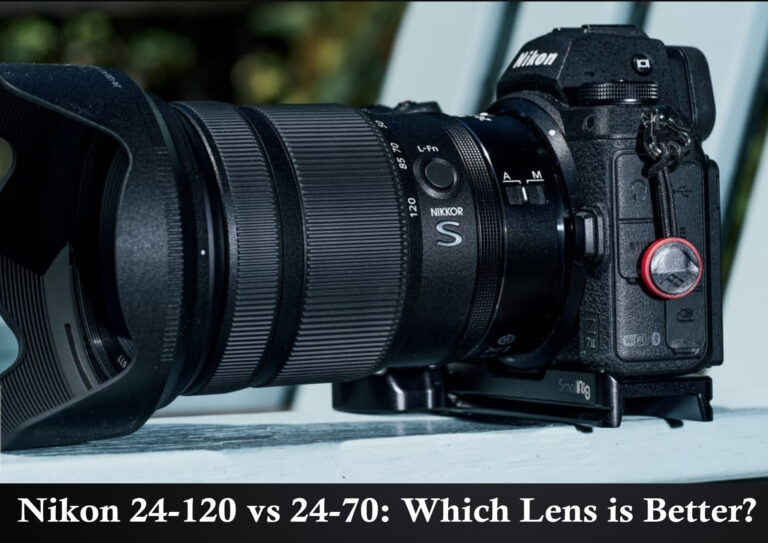Comparing Fujifilm GFX 100S and Sony A7RV: Which is Better?
[ad_1]
This article will be discussing and comparing the Fujifilm GFX 100S and Sony A7RV cameras, addressing their features, performance, and usability to determine which is better for photographers. We will explore the key differences between these two popular camera models in order to help readers make an informed decision when considering a new camera purchase.
Which camera has better image quality?
Both the Fujifilm GFX 100S and Sony A7RV offer exceptional image quality, but there are some differences to consider. The Fujifilm GFX 100S boasts a 102-megapixel sensor, which enables it to capture highly detailed and sharp images. Its larger sensor size also contributes to superior low-light performance and dynamic range. On the other hand, the Sony A7RV features a 61-megapixel sensor, which still provides excellent image quality but may not offer the same level of detail as the Fujifilm GFX 100S. Additionally, the Sony A7RV’s smaller sensor may not perform as well in low-light conditions compared to the GFX 100S.
Which camera is better for video?
When it comes to video capabilities, the Sony A7RV has the edge over the Fujifilm GFX 100S. With its advanced video recording features, including 4K resolution and various frame rate options, the A7RV is a strong choice for videographers. In contrast, while the GFX 100S can still capture high-quality video, its video capabilities may not be as robust as those of the Sony A7RV. Additionally, the Sony A7RV offers a more versatile autofocus system for video recording, which can be a significant factor for videographers when choosing between the two cameras.
Which camera is better for portability and handling?
In terms of portability and handling, the Sony A7RV is the more compact and lightweight option, making it easier to carry around for extended periods. Its smaller form factor also contributes to better handling, especially for photographers who prefer a more discreet and nimble camera. On the other hand, the Fujifilm GFX 100S, while larger and heavier, offers a more substantial and ergonomic grip, which can be beneficial for photographers with larger hands or those who prefer a more secure hold on their camera. Additionally, the GFX 100S’s larger body size may accommodate larger lenses more comfortably, providing a better overall balance when shooting.
Which camera offers better lens options and versatility?
Both the Fujifilm GFX 100S and Sony A7RV have a wide range of compatible lenses available, offering photographers plenty of options for different shooting scenarios. The GFX 100S benefits from Fujifilm’s lineup of high-quality medium format lenses, which are renowned for their optical performance and build quality. These lenses can provide exceptional sharpness and resolving power, making them suitable for demanding photographic applications. On the other hand, the Sony A7RV benefits from a vast selection of lenses from both Sony and third-party manufacturers, offering a broad range of focal lengths and specialized optics. This versatility allows photographers to adapt their kit to a wide variety of shooting situations, from landscapes to portraits to sports photography.
Which camera is better for overall performance and value?
Overall, the Fujifilm GFX 100S and Sony A7RV are both highly capable cameras that excel in different areas. The GFX 100S offers exceptional image quality and low-light performance, making it an excellent choice for photographers who prioritize ultimate image detail and quality, especially in studio and landscape photography. On the other hand, the Sony A7RV shines in its video capabilities, portability, and versatility, making it a strong contender for hybrid shooters who require both high-quality stills and video performance in a more compact package. When considering the value proposition, the Fujifilm GFX 100S may represent a higher initial investment due to its medium format sensor and associated lenses, while the Sony A7RV provides a more cost-effective and versatile option for a wider range of photographers.
Conclusion
Both the Fujifilm GFX 100S and Sony A7RV have their own strengths and weaknesses, offering distinct advantages depending on the specific needs and preferences of photographers. The GFX 100S excels in image quality and low-light performance, making it well-suited for photographers who prioritize ultimate image detail and quality, especially in studio and landscape photography. On the other hand, the Sony A7RV’s strong video capabilities, portability, and versatility make it a compelling choice for hybrid shooters who require high-quality stills and video performance in a more compact package. Ultimately, the decision between the two cameras will depend on the individual photographer’s priorities, shooting style, and budget.
FAQs
1. Can I use the Fujifilm GFX 100S for video recording?
Yes, the Fujifilm GFX 100S is capable of recording high-quality video, but its video capabilities may not be as extensive as those of the Sony A7RV. If video recording is a primary consideration for you, the A7RV may be a better option due to its advanced video features and autofocus system.
2. Is the Sony A7RV suitable for professional studio photography?
The Sony A7RV’s 61-megapixel sensor and excellent image quality make it a viable option for professional studio photography. However, the Fujifilm GFX 100S’s larger 102-megapixel sensor and superior low-light performance may provide an edge in certain studio and commercial photography applications.
3. Which camera is better for landscape photography?
Both the Fujifilm GFX 100S and Sony A7RV are well-suited for landscape photography, but the GFX 100S’s larger sensor and superior image detail may make it the preferred choice for photographers who prioritize ultimate image quality and resolution in their landscape work.
4. Can I adapt lenses from other systems to the Fujifilm GFX 100S and Sony A7RV?
While it is possible to adapt lenses from other systems to both the GFX 100S and A7RV using third-party adapters, it is important to consider compatibility and performance implications. Some lenses may not fully utilize the camera’s capabilities when adapted, and autofocus and electronic communication with the camera may be limited.
5. Which camera offers better value for the price?
The value proposition of the Fujifilm GFX 100S and Sony A7RV will depend on specific shooting needs and budget constraints. The GFX 100S may represent a higher upfront investment due to its medium format sensor and associated lenses, while the A7RV provides a more cost-effective and versatile option for a wider range of photographers.
[ad_2]







